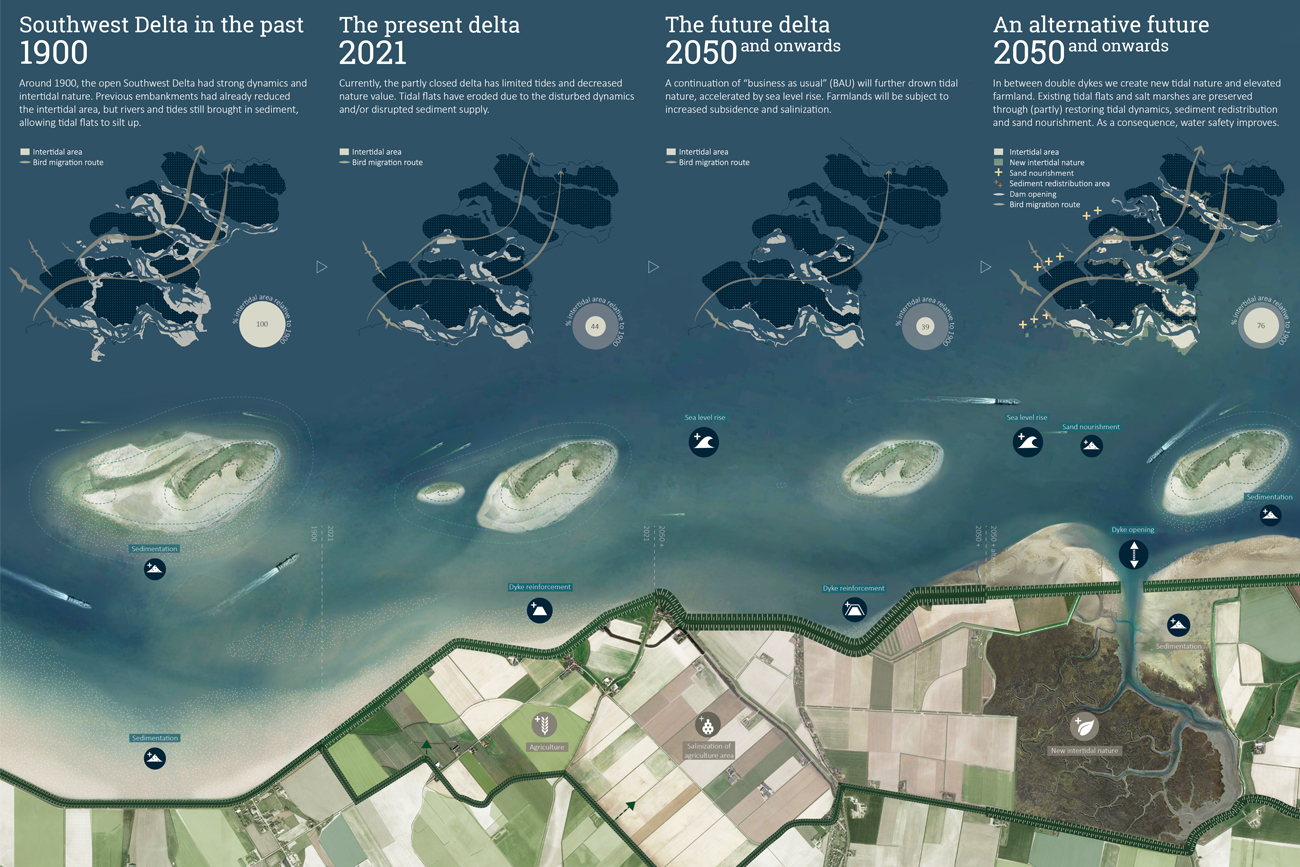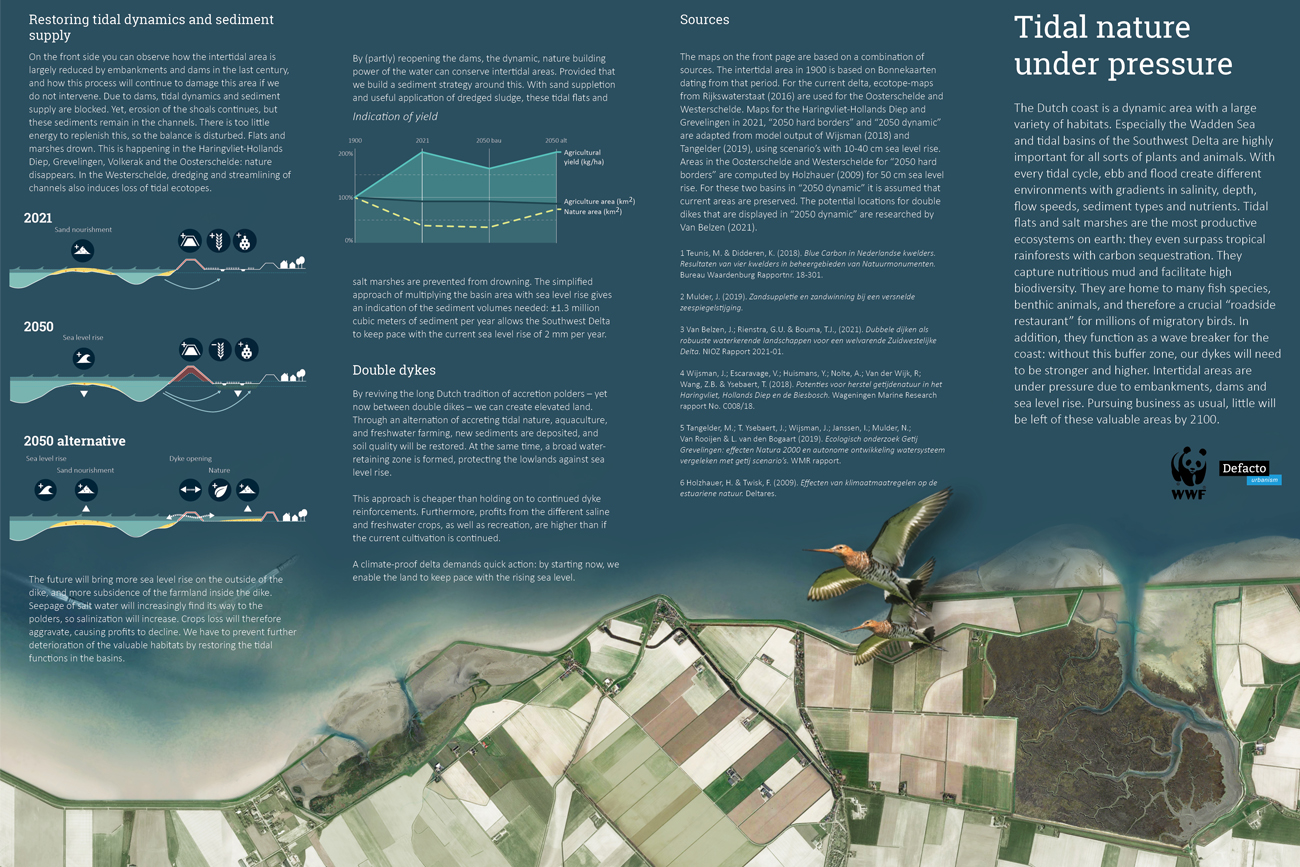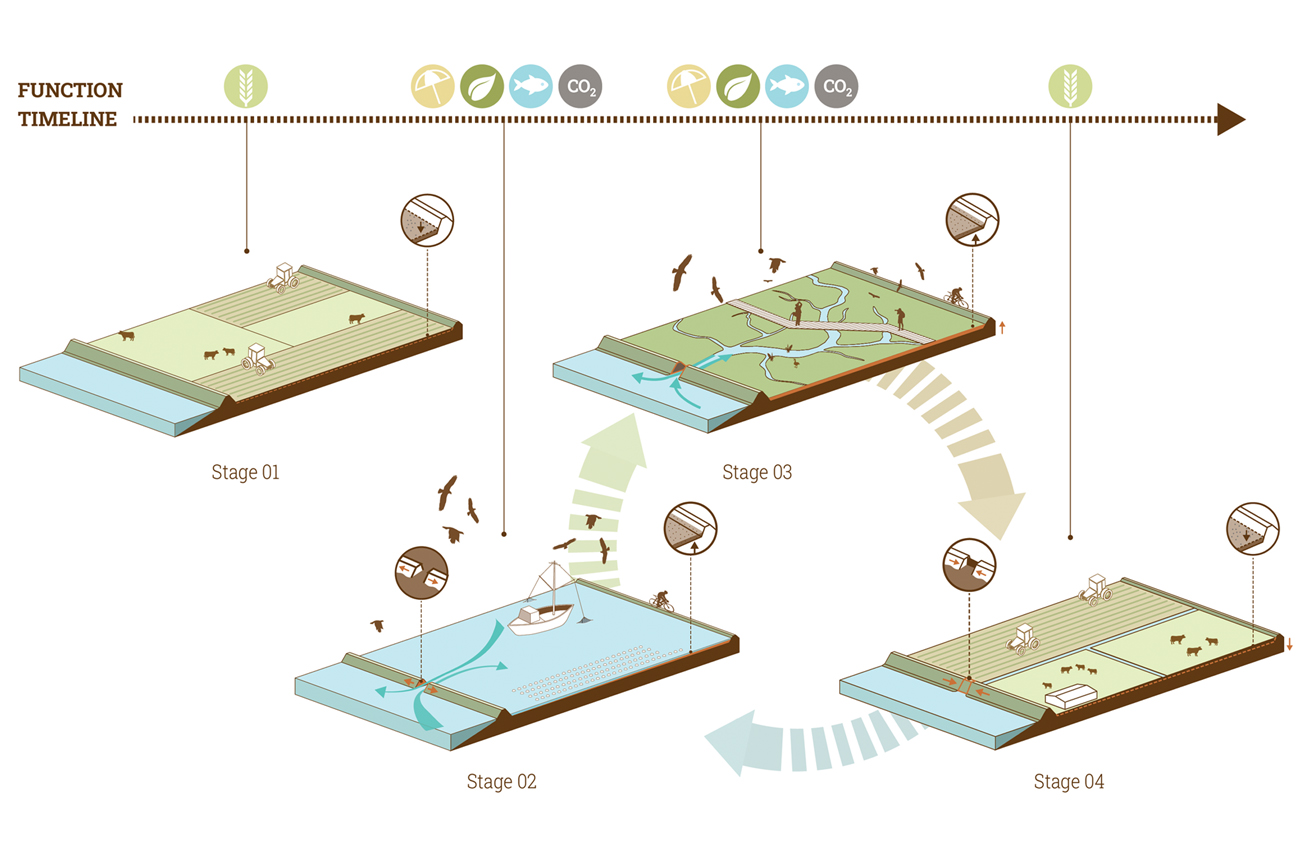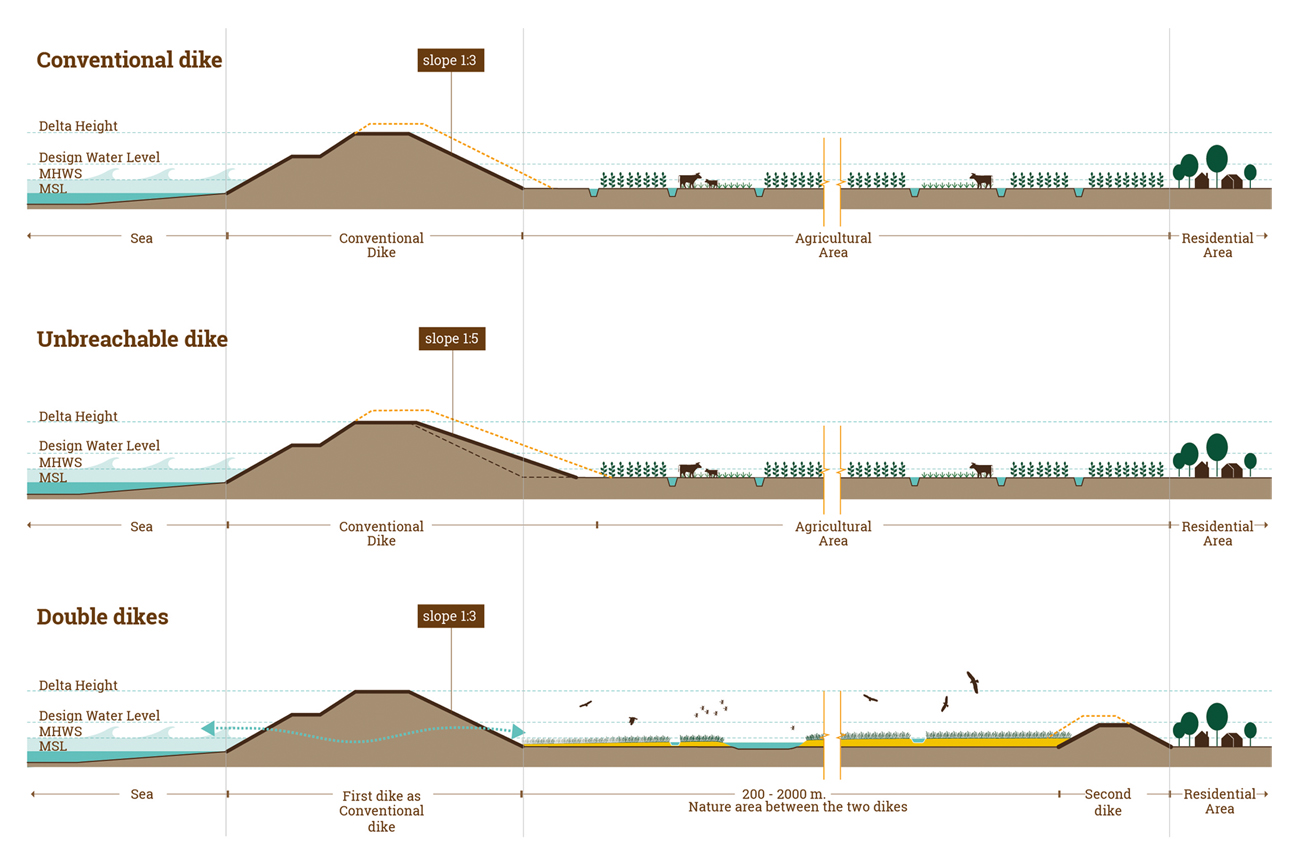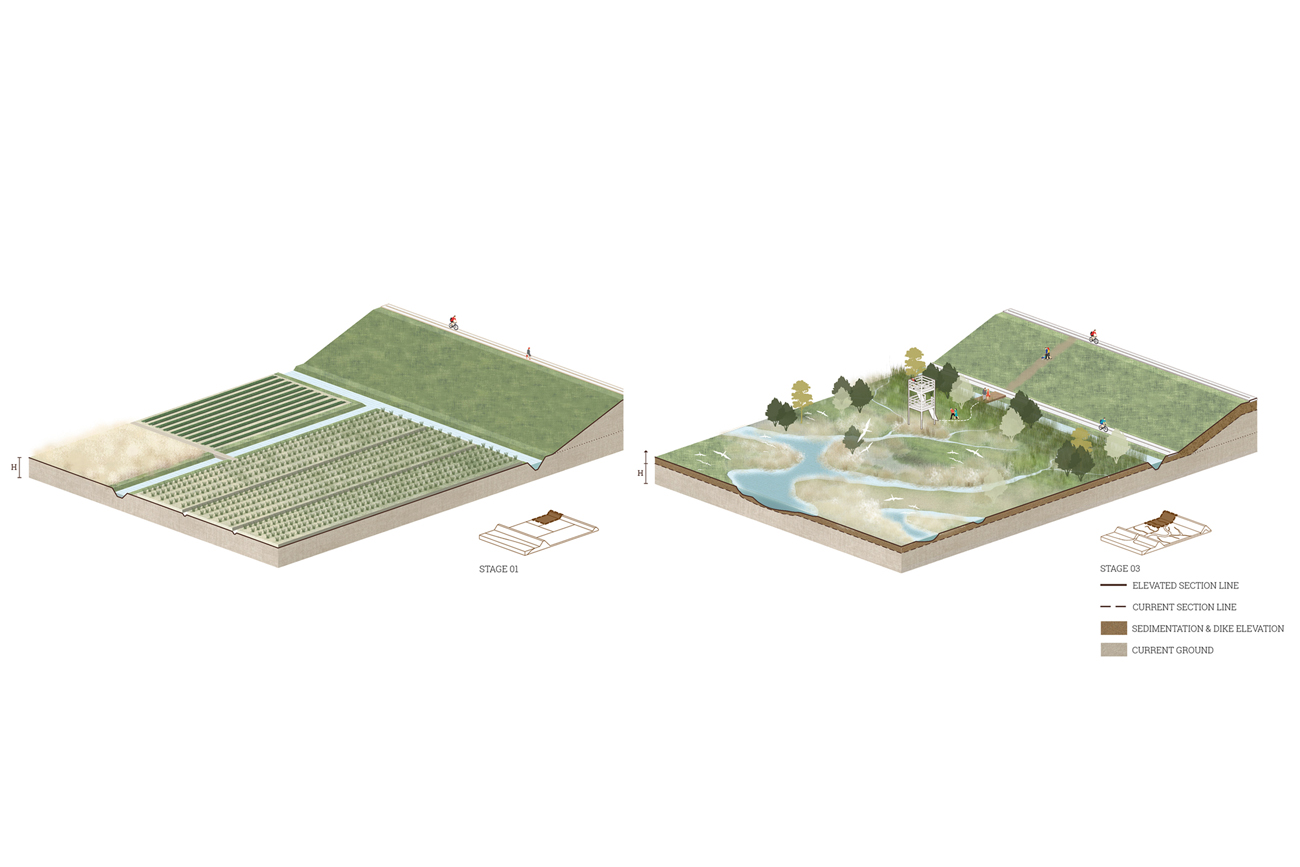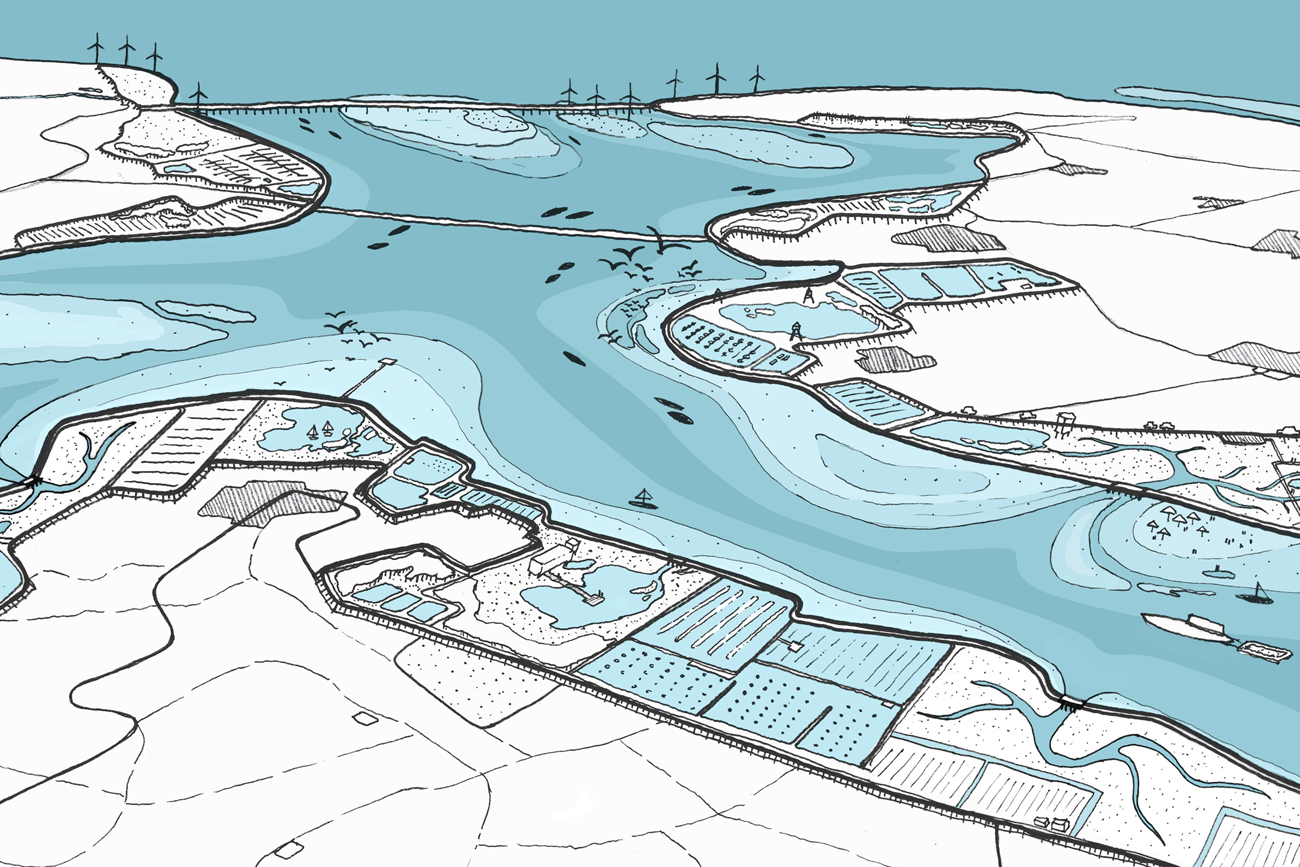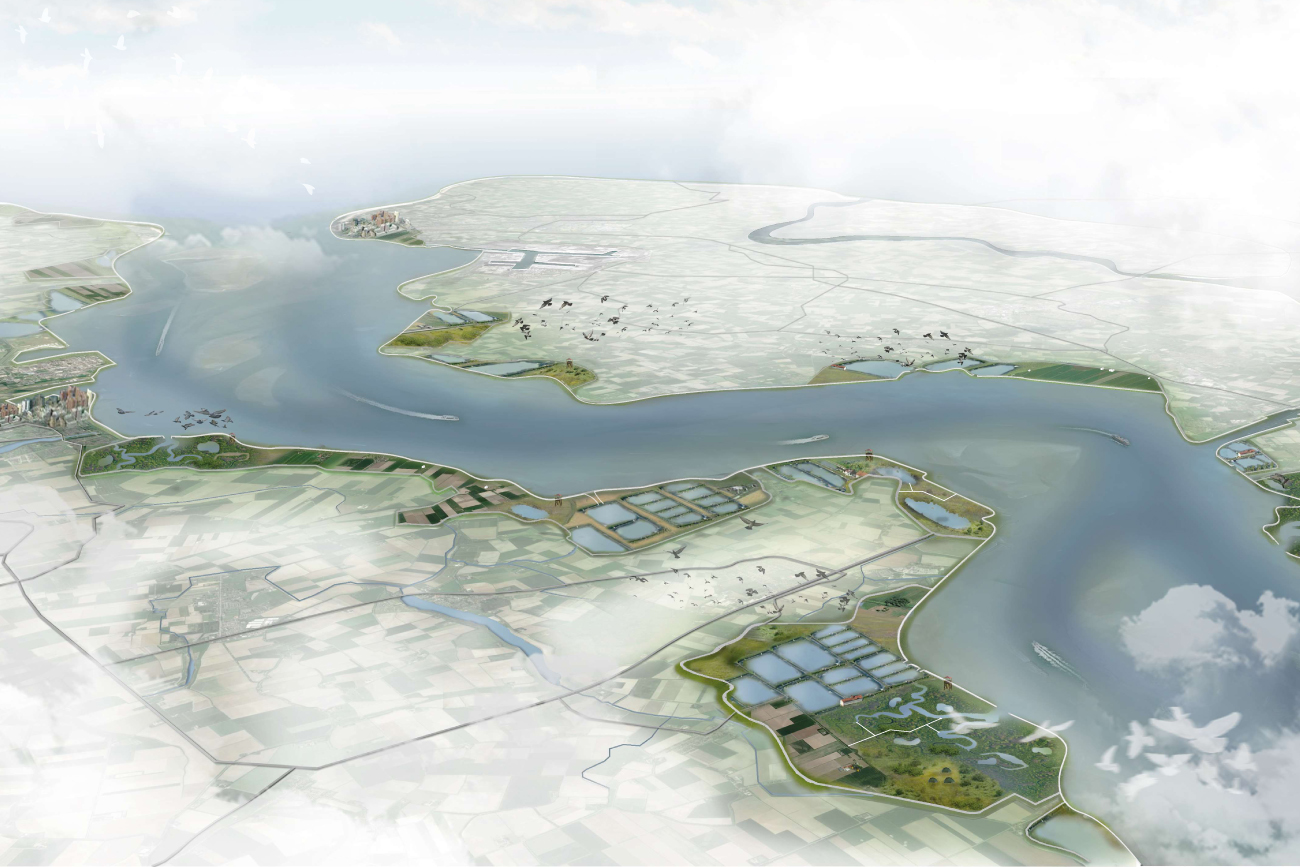South-west Delta, The Netherlands
Double Dike System
Building with nature concept development
Sea level rise, subsiding land and economic growth contribute to the need to further develop the Netherlands flood risk management system. Together with the WWF and NIOZ we worked on a nature-based extension of the current Southwest Delta coastal dike system.
One of the characteristics of the Southwest Delta is the landscape with parallel dikes, that historically developed by stepped reclamation of the naturally extending flood plains. By re-opening the current primary sea dike, the ebb and flow of the tide can enter the land behind it and deposit sediments. The second dike is and can be lower than the primary dike since the water force will already be reduced by the primary levee and the created foreshore.
The area between these double dikes, will not only create a valuable ecological intertidal zone, but also slowly rise because of the silt that builds up with each tide. Along the Western Scheldt this will be about 3 to 5 centimetres per year. In half a century, the land between the dikes can grow up to three metres and become an important part of the flood defence. In the meantime, the intertidal zone can be used for aquaculture and saline crops, for recreational purposes and to strengthen the ecology of the area.
Although the implementation costs compared to the conventional solution (of strengthening the primary dike) are higher, the return on investment and additional ecological and recreational benefits are much higher.
Client: World Wildlife Fund (WWF)
In cooperation with: WWF, NIOZ, Gerlof Rienstra
